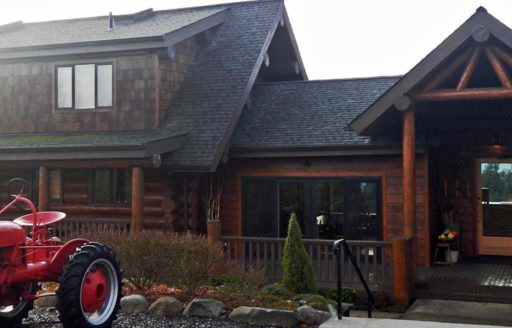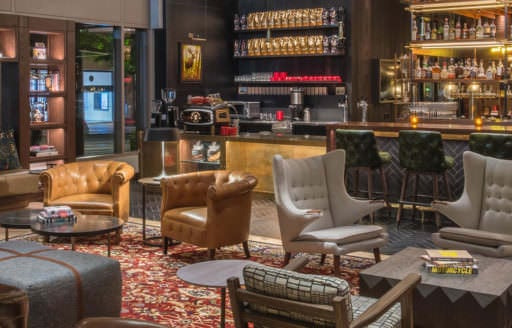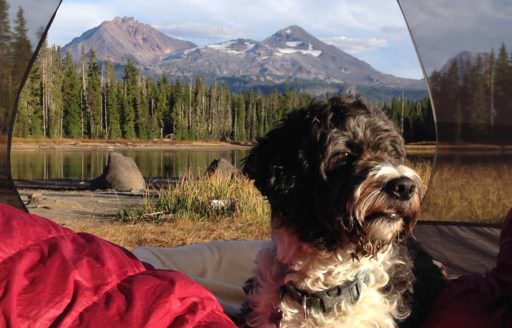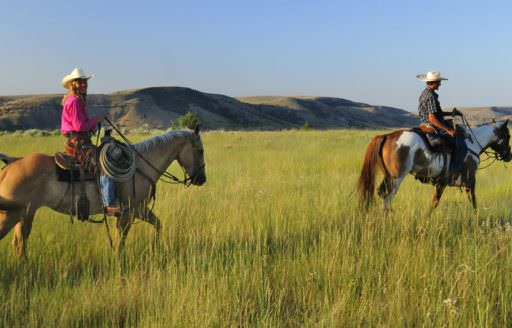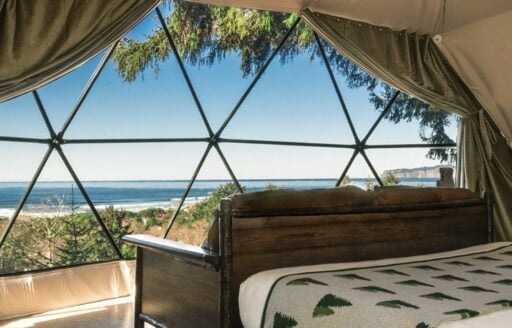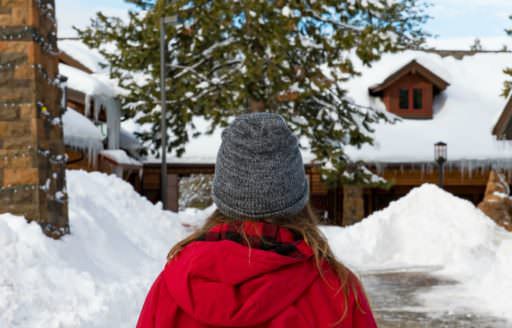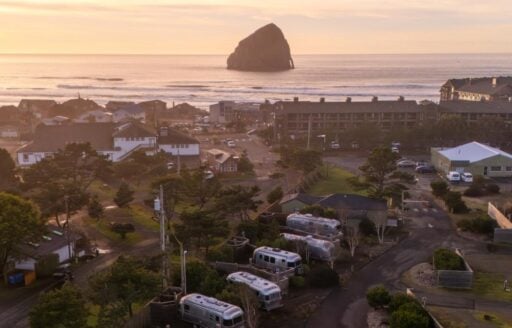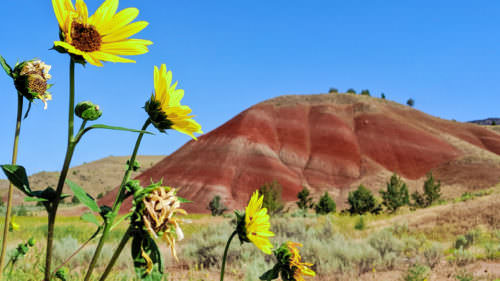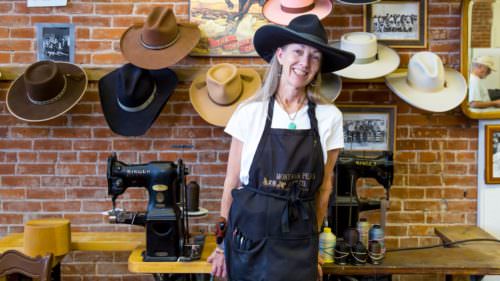Find our entire Accessible Road Trip series here: 1. Willamette Valley / 2. Central Oregon / 3. Portland Region / 4. Mt. Hood & Columbia River Gorge / 5. Southern Oregon / 6. Eastern Oregon / 7. Oregon Coast
Houston Vandergriff has been to all 50 states, about 30 countries and seven Canadian provinces — spending most of his time with a camera in hand. The globetrotting photographer, who has Down Syndrome, took his first trip to Eastern Oregon in spring 2025, and continued finding moments of awe in the people, places and landscapes all around.
“He puts his whole heart into whatever it is that he’s doing. That’s exactly who you’d like to be traveling with,” says his mom and traveling companion, Katie Vandergriff. “Accessibility comes in many different shapes and forms. What Houston and I experience many times is it’s just a matter of awareness. … Every person wants to be seen, valued and treated fairly. That’s not too much to ask, and everybody benefits.”
Wheel the World is a travel platform that has partnered with Oregon and 43 of its communities, meaning a significant percentage of the state’s hotels, activities, transportation and restaurants have been reviewed and verified by accessible community travelers. These listings include detailed accessibility information and photos to help travelers plan their trip to Oregon with confidence.
In fact, Oregon is the first Accessibility Verified state in the U.S., and Eastern Oregon invites travelers of all mobilities to enjoy its Oregon Trail history, Indigenous culture, spectacular Painted Hills and pristine natural beauty. Here’s how to take an accessible 2-day road trip around Eastern Oregon.
Day 1: World-Class Museums, Rodeo Attire and Bronze Art
Drive three hours east of Portland along scenic Interstate-84 and you’ll arrive in Pendleton — Oregon’s best-known pioneer town, home to the annual Pendleton Round-Up and a great spot to get a steak and get a custom hat crafted the same way it’s been crafted since the 1800s. (Pro tip: You can also fly in and out of Pendleton Regional Airport).
Vandergriff got a deep dive into this culture on his trip. He also got to experience the rich Indigenous history, traditions and contemporary culture of this region through a tour at Tamástslikt Cultural Institute, the only museum on the Oregon Trail that tells the story of western expansionism from a tribal point of view. Tamástslikt celebrates the customs and practices of the Cayuse, Umatilla, and Walla Walla Tribes who have lived on the land for more than 16,000 years through interactive displays, special events and informative programming. Visitors can find a step-free entrance, easy views from a wheelchair, an obstacle-free area and accessible restrooms.
The tour continues at nearby Pendleton Woolen Mills, which has been producing their vibrant, sustainable textiles since 1893. The mills also produce these blankets, robes and shawls for Indigenous tribes. Visitors can find easy views for wheelchair users, an assistive listening device and a private restroom for people with disabilities. Spend the afternoon browsing the independent shops, brewpubs and cafes in downtown Pendleton, stopping to admire the bronze statues and public art. Make time to drive the 30-mile Whisky & Rocks Farm Trail, which connects Pendleton with wine-rich Milton-Freewater, showcasing award-winning wine-tasting rooms.
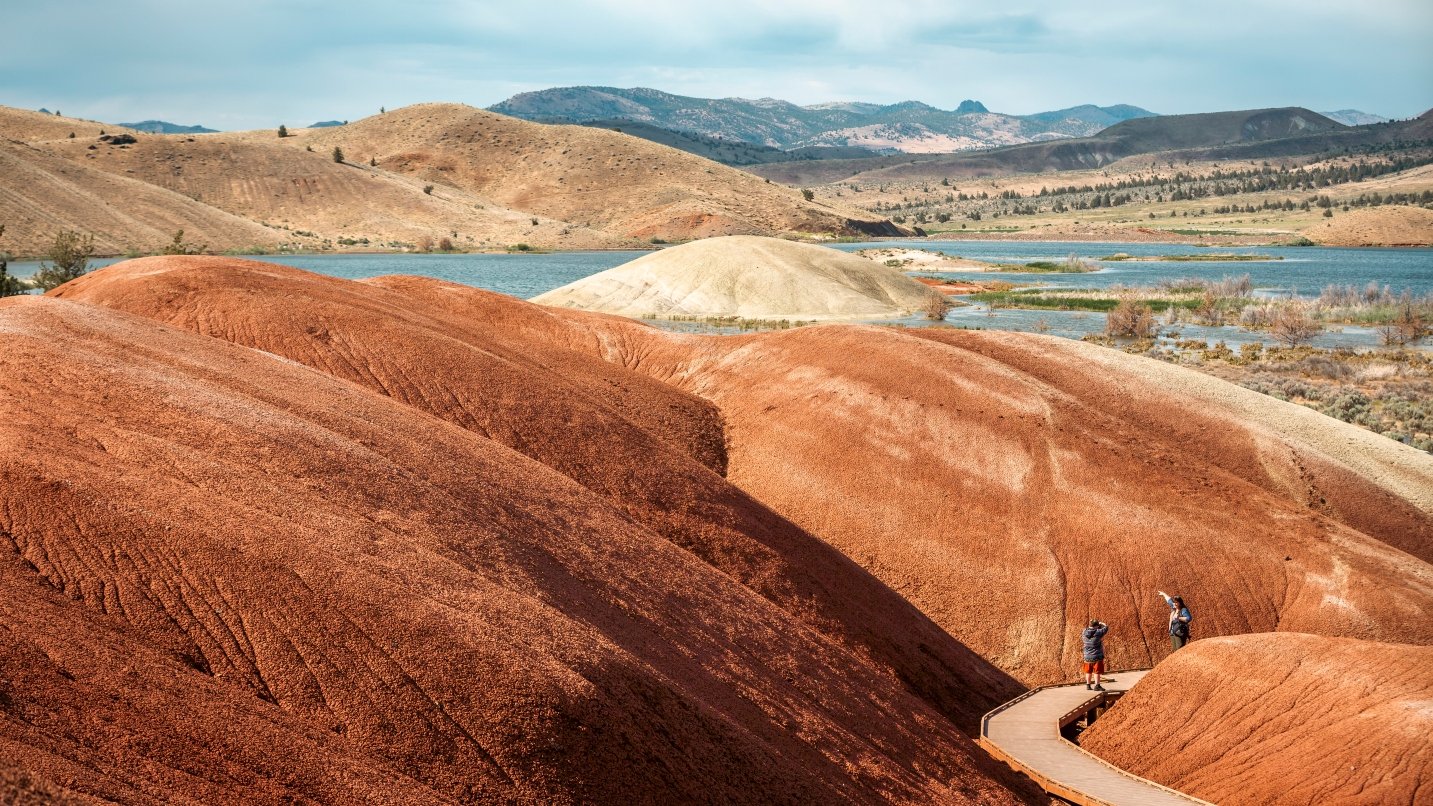
Day 2: Geological Wonders, Accessible Trails and Protected Ecosystems
Between the soaring peaks of the Wallowa Mountains, hidden river gorges, the deep chasm of Hells Canyon and magical geologic formations dating back 55 million years, this rugged region is made for adventurers. An incredibly scenic drive 3.5 hours southwest of Pendleton into John Day River territory is the Painted Hills, a unit of the John Day Fossil Beds National Monument.
While most of the Painted Hills trails and overlooks are not considered accessible, the Painted Cove Trail is on a wheelchair-friendly boardwalk and offers access to those dramatic hues that are always more magnificent in person. Find accessible picnic tables, water fountains and restrooms here. Note that there’s no cell service within the monument, so download or carry trail and driving maps and carry your Ten Essentials for hiking for the best experience.
It’s also worth a stop at the Thomas Condon Visitor Center, located in the Sheep Rock Unit of the monument, nine miles west of Dayville. The parking lot has a non-sloping paved approach to the visitor center. The fossil museum, theater, bookstore, restrooms and drinking fountains are wheelchair-accessible. The park film is shown with captions on at all times although audio description and hearing loops are available upon request at the front desk. Touch exhibits including a wide variety of fossil replicas are available in the center. Call ahead if you’d like to reserve a wheelchair for use.
When you visit any part of this iconic landmark, be sure to stay on designated trails to help keep these fragile ecosystems intact for generations to come. The monument’s “Don’t Hurt the Dirt” campaign requires visitors to practice Leave No Trace ethics to protect the soil and plants and keep from wandering anywhere off trail because the damage of footprints on the geology can last for decades.
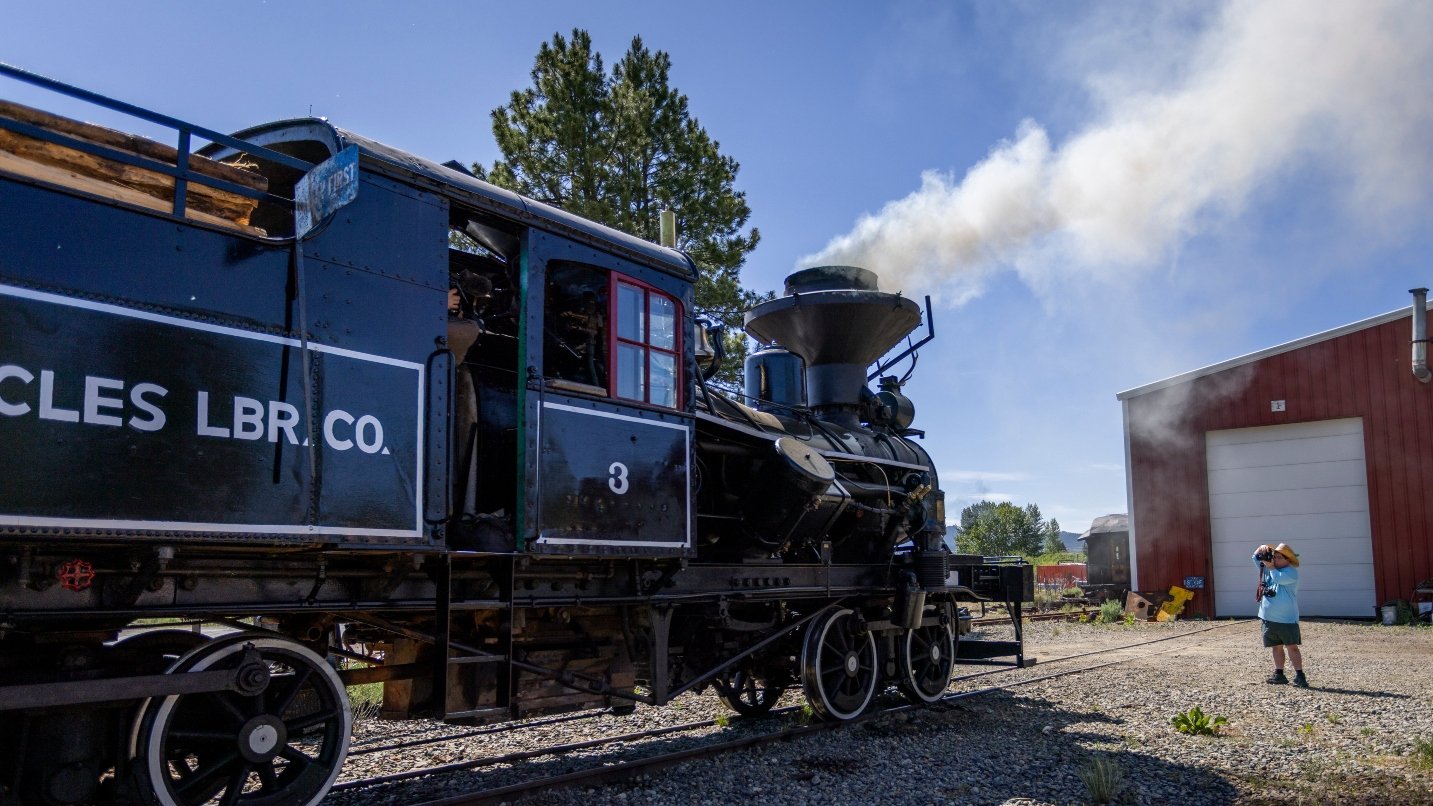
Day 3: Historic Hotel, Destination-Worthy Craft Brews and a Steam-Powered Train Ride
Looking for adventure even farther off the beaten path? Head three hours east of Mitchell to Baker City, home to the historic Geiser Grand Hotel and a lively downtown full of bakeries, coffee shops and shops selling everything from artisan chocolates to wine to cheese. Family-friendly Barley Brown’s Beer is a lovely stop for lunch or dinner, known for its award-winning brews, burgers, salads and other hearty pub fare.
When you’re done cruising around town book a round-trip sightseeing tour on the Sumpter Valley Railroad, based at a historic depot just outside of town. This narrow-gauge heritage railway offers scenic rides through the picturesque Sumpter Valley, showcasing the rich history of the region’s gold-mining era. Visitors of all ages and mobilities can experience the charm of a vintage steam and diesel locomotive with stunning views of the landscape. Find a step-free entrance, smooth flooring, accessible restrooms and parking. All cars of the train are accessible except the caboose.
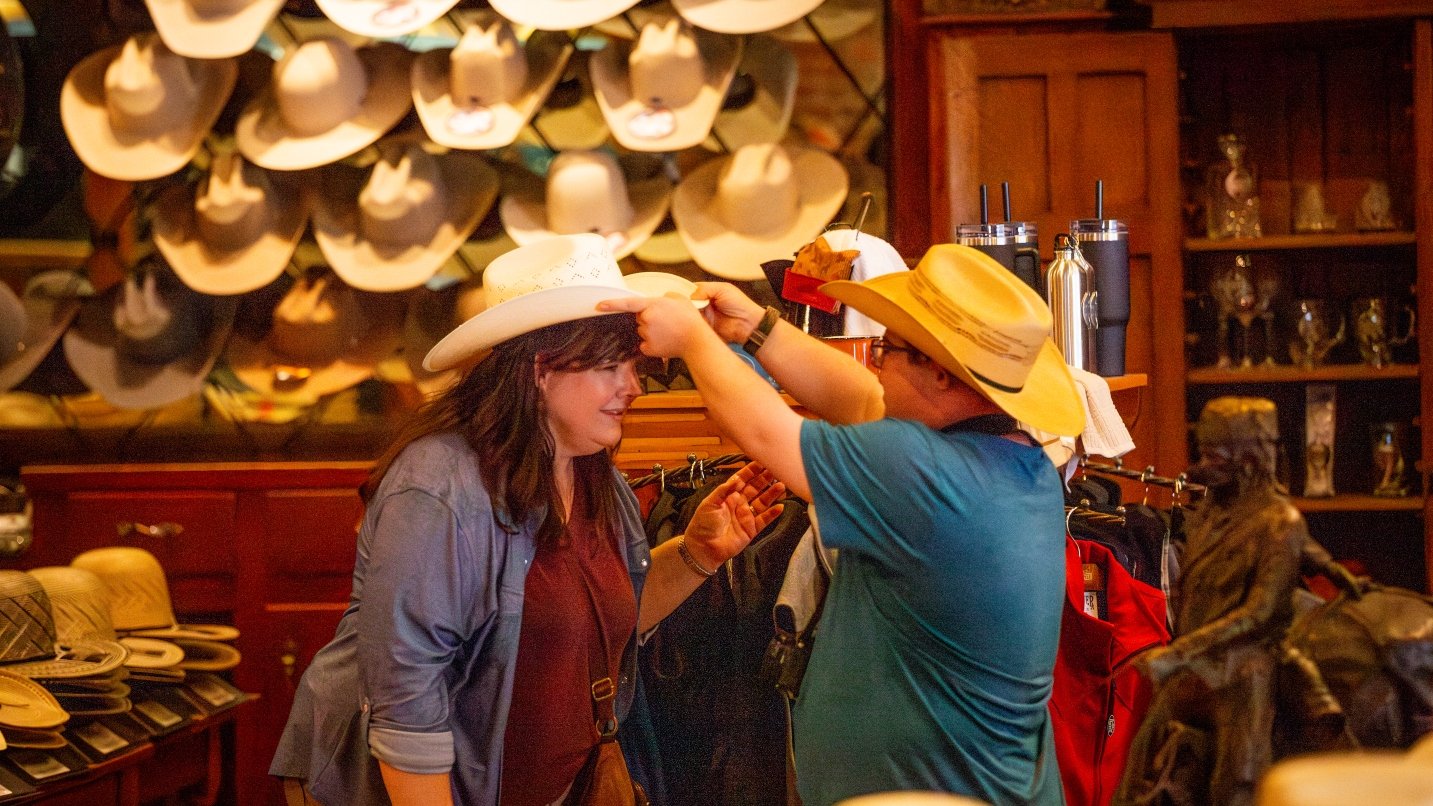
If You Go
Need a list of accessible locations in this itinerary?
Tamástslikt Cultural Institute
For more accessible itineraries in Oregon, visit our main accessibility page.



